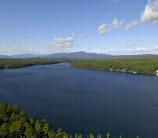


|
Tilton Conservation
Commission Tilton, NH |
|
Home |
Members |
Mission
Statement |
Easements |Newsletter |
Forms
and
Links |
Contact Us | Pictures Archived
newsletters
By
Topic
|
CONSERVATION NEWS
Fall-Winter 2024 Newsletter



Rechargeable Lithium Batteries in the News (from NH DES)
Starting on
July 1, 2025, rechargeable lithium-ion
batteries will be prohibited
from disposal in New Hampshire landfills and incinerators.
The following
items may contain these batteries:
automobile vehicles
- electric bikes
and scooters - lawncare equipment
cell phones - laptops - cameras - tablets - wireless headphones
speakers
- toothbrushes
- cordless power tools -
toys
Lithium-ion batteries contain hazardous metals
and can cause safety hazrds when improperly managed. When crushed or damaged in
any way, they can ignite
causing intense fires. For these reasons,
lithium-ion batteries should never be put in the trash or curbside recycling
bin. They have bcome a leading cause of fires for
trash handlers and waste
mangement facilities. It is estimated that more than 5,000 fires occur at waste
management facilities nationwide, many likely caused
by lithium-ion
batteries. Fires are not only a safety hazard to waste staff and the public;
they also can result in hundreds of thousands of dollars in damages to
expensive equipment and buildings.
In an effort to
reduce the safety risks associated with the improper disposal of lithium-ion
batteries, NH lawmakers voted to add them tothe list of wastes that
are banned from disposal, and Governor Sununu signed
the bill into law. Starting in July, households and businesses must recycle
their lithium-ion batteries instead
of putting them in the trash. These batteries will
have to be recycled through special battery collection programs and never mixed
with regular recyclables.
In Tilton, Staples, Lowe's and Home Depot offer
collection boxes for recycling these batteries. Or, you can check
Call2recycle.org to find other sites.
NH DES
also offers information about
batteries as
well as the
Managing My Waste site.
Winnisquam Watershed Network Update on Lake
Winnisquam
"The good news is that Lake Winnisquam is
considered to be an oligotropic lake. Oligotropic lakes are clear, have low
concentrations of
phosphorus and algae, and can have a great diversity
offish and wildlife. While the lake is not pristine, presently it is in
relatively
good condition. There are concerns forthe future, however.
Phosphorus and algal concentrations appear to be increasing
while water
clarity, at times, is decreasing. Conductivity in tributaries is sometimes
elevated, likely the result of the use of road salt
in the watershed.
Population growth and development (and redevelopment) along the shoreline and in
the watershed is significant.
Invasive species (both plants and animal) have
been found in the lake.
The bad news is that in recent years there have
been blooms of cyanobacteria (formerly known as blue-green algae) in Lake
Winnisquam.
This problem is not unique to Winnisquam, having occurred in
several other New Hampshire lakes and other water bodies. Cyanobacteria
is a
natural component of freshwater systems worldwide and, when conditions are
right, blooms can occur..which are harmful to pets,
livestock, wildlife, and
people. Cyanobacteria can cause both acute and chronic diseases.
The Winnisquam Watershed
Network is working with a host of state and federal agencies, local governments,
organizations, and
individuals to address cyanobacteria blooms and other
concerns in Lake Winnisquam." The Tilton Conservation Commission is
pleased
to have provided financial assistance to the WWN for their efforts to remove
milfoil and other invasive species from the lake.
The TCC also used funds
from the Improving and Maintaining Lakes Capital Reserve Fund previously
established in 2007 to assist the
Silver Lake Association with their work in
removing curly leaf pondweed from the Tilton portion of Silver Lake.
Buffalo Park

Once again, the Tilton
Conservation Commission reminds residents that there is
an amazing 55-acre property just minutes from downtown that is available
for
walking the trails or snowshoeing when winter arrives. It is best accessed at
the end of High Street Extension where there is a kiosk and a small parking
lot. Bring your cell phone or camera to take pictures. Bird watch. Try your hand
at tree identification. Look for animal tracks. Try walking the different trails
which are marked. It's chance to enjoy New England winter and get some
exercise at the same time.